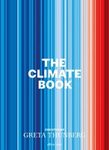By: W John Kress(Editor), Jeffrey K Stine(Editor), Elizabeth Kolbert(Foreword By), Edward O Wilson(Afterword by)
206 pages, 8 plates with 7 colour photos and colour illustrations
Explores the causes and implications of the Anthropocene, or Age of Humans, from multiple points of view including anthropological, scientific, social, artistic, and economic
![Living in the Anthropocene Living in the Anthropocene]()
Click to have a closer look
About this book
Customer reviews
Biography
Related titles
About this book
Although we arrived only recently in Earth's timeline, humans are driving major changes to the planet's ecosystems. Even now, the basic requirements for human life – air, water, shelter, food, nature, and culture – are rapidly transforming the planet as billions of people compete for resources. These changes have become so noticeable on a global scale that scientists believe we are living in a new chapter in Earth's story: the Anthropocene, or Age of Humans. Living in the Anthropocene: Earth in the Age of Humans is a vital look at this era. The book contextualises the Anthropocene by presenting palaeontological, historical, and contemporary views of various human effects on Earth. It discusses environmental and biological systems that have been changed and affected; the causes of the Anthropocene, such as agricultural spread, pollution, and urbanization; how societies are responding and adapting to these changes; how these changes have been represented in art, film, television, and literature; and finally, offers a look toward the future of our environment and our own lives.
Customer Reviews
Biography
W. John Kress, a distinguished scientist and curator of botany at the National Museum of Natural History, formerly served at the Smithsonian as the Grand Challenges Consortia's director of science and the interim undersecretary for science. Trained in evolutionary biology, systematics, and ecology, he is also the author of The Weeping Goldsmith: Discoveries in the Secret Land of Myanmar.
Jeffrey K. Stine is curator for environmental history at the National Museum of American History and the author of the award-winning books Mixing the Waters: Environment, Politics, and the Building of the Tennessee-Tombigbee Waterway and America's Forested Wetlands: From Wasteland to Valued Resource.
By: W John Kress(Editor), Jeffrey K Stine(Editor), Elizabeth Kolbert(Foreword By), Edward O Wilson(Afterword by)
206 pages, 8 plates with 7 colour photos and colour illustrations
Explores the causes and implications of the Anthropocene, or Age of Humans, from multiple points of view including anthropological, scientific, social, artistic, and economic
"Original essays by leading scientists, historians, archaeologists, and anthropologists that address the related problems of unchecked population growth, scarcity of resources, climate change, and environmental pollution. Like many ecologically minded authors and thinkers before them, National Museum of Natural History curators Kress (The Weeping Goldsmith: Discoveries in the Secret Land of Myanmar, 2009, etc.) and Stine (America's Forested Wetlands from Wasteland to Valued Resources, 2008, etc.) warn that these complex, still-to-be-resolved issues will endanger humanity's future if they are not addressed immediately. As the title suggests, human activities have transformed terrestrial and maritime habitats, causing mass extinctions of other species at an unprecedented rate, comparable to a geologic turning point. "Our planet", they write, "has been experiencing a multitude of dramatic and far-reaching changes". The articles are grouped into five sections: "A Changing Planet", "Drivers of Change", "Responding to Change", "Visual Culture", and "The Way Forward". Smithsonian Institute geologist Scott L. Wing sets the tone in the first section. "We are no longer a bit player in the story of this planet", he writes, and "the influence of our actions now will change the global environment for at least hundreds of human generations to come". In the second section the editors suggest that we must widen our notion of biosphere pollution to include "space junk" like "expended rockets [...] and dead satellites". In "Black and Green", Lonnie G. Bunch III, the founding director of the National Museum of African American History and Culture, points to the interconnections among environmental and racial issues created by the segregation in urban housing. In an upbeat afterword, renowned biologist and naturalist professor Edward O. Wilson emphasizes that if humanity passes through the current "bottleneck of overpopulation and environmental destruction [...] human existence could be a paradise compared to today." New Yorker writer Elizabeth Kolbert provides the foreword, and other contributors include Stephen J. Pyne, Wade Davis, and Kelly Chance. A valuable contribution to the ecological bookshelf."
– Kirkus Reviews































